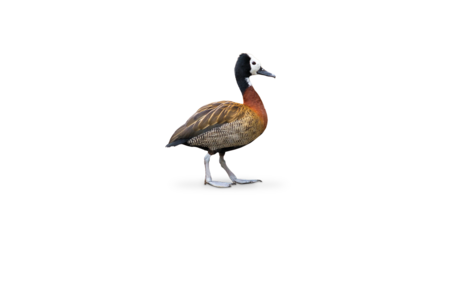White-faced Whistling Duck
Dendrocygna viduata
![[Translate to English:] [Translate to English:]](/fileadmin/_processed_/8/a/csm_witwenpfeifgans-hellabrunn-tierpark-welt-der-voegel-tierlexikon_092bce9a44.jpg)
- Family
- Anatidae (Ducks, geese and swans)
- Weight
- 600 – 700 g
- Habitat
- Inland waterways
What is the origin of the name?
The white-faced whistling duck derives its name from its distinctive white face and three-note whistling call. This whistle is slightly different in males and females, and usually only heard at night during foraging.

Well-groomed bird
White-faced whistling ducks have long-term relationships. They stay with the same partner for several seasons. To strengthen their partnership, they male and female frequently preen each other’s head and neck. Outside the breeding season, they form large colonies where they forage for food together as well as spend a great deal of time preening. Active predominantly at dusk and at night, the white-faced whistling duck usually passes the day resting on the water.
White-faced whistling ducks are hunted in parts of East Africa for local consumption.
Distribution
